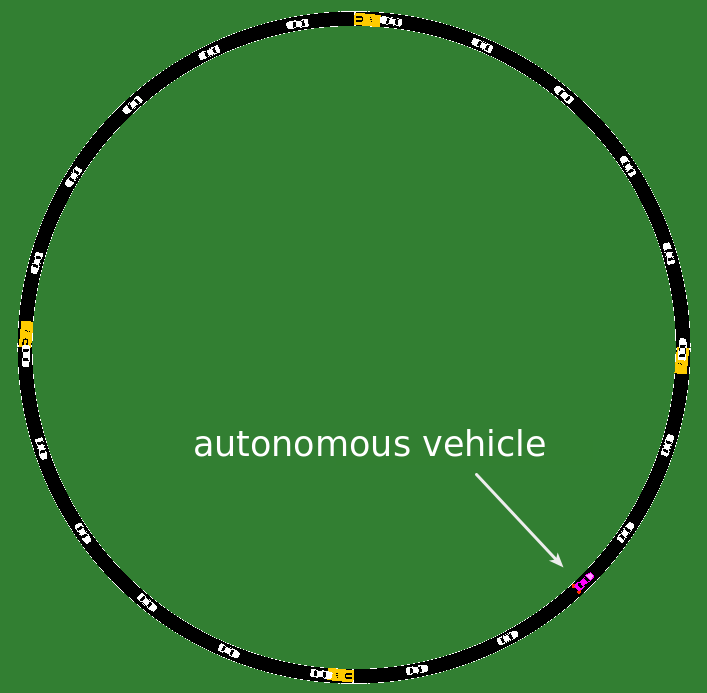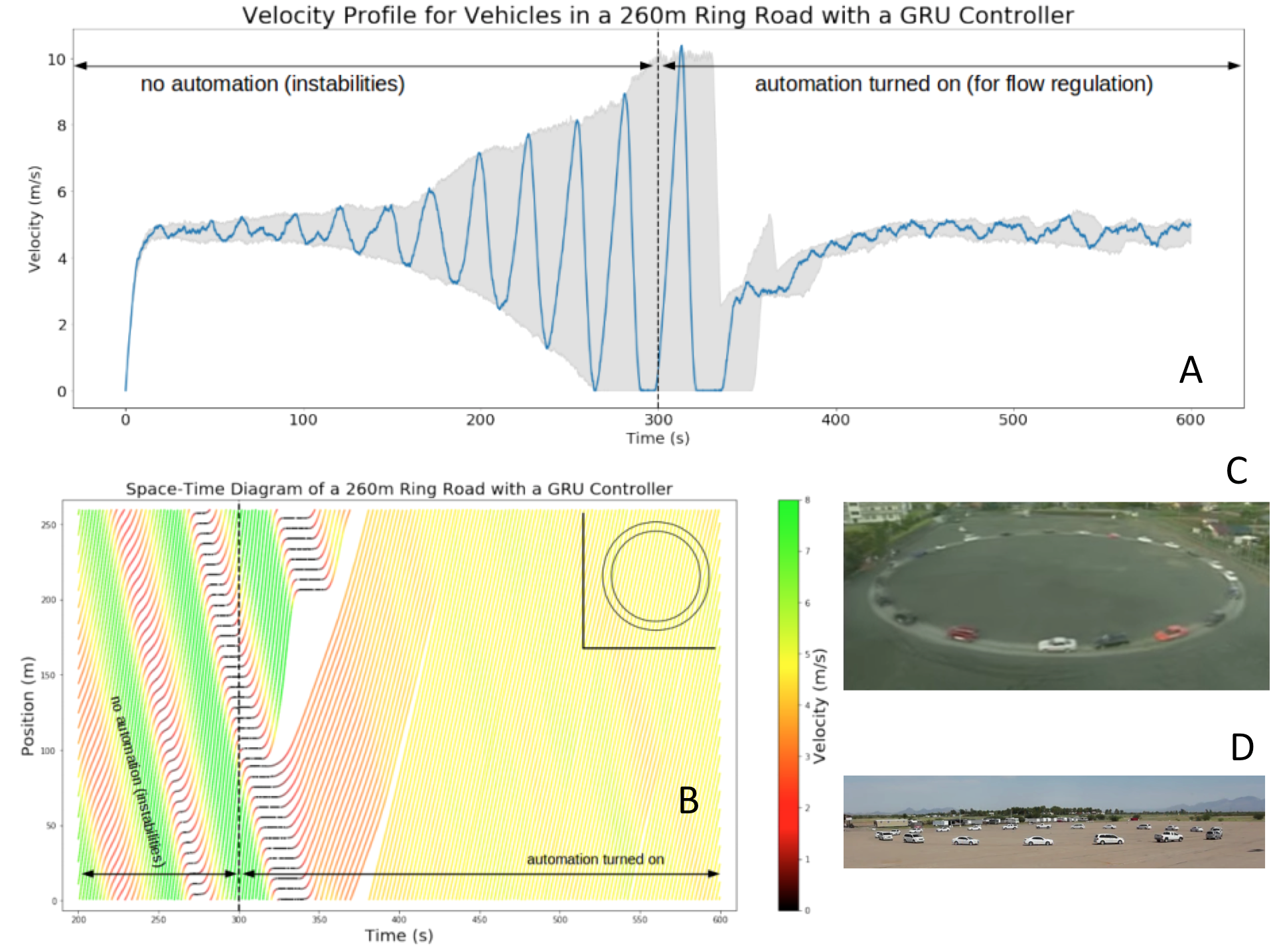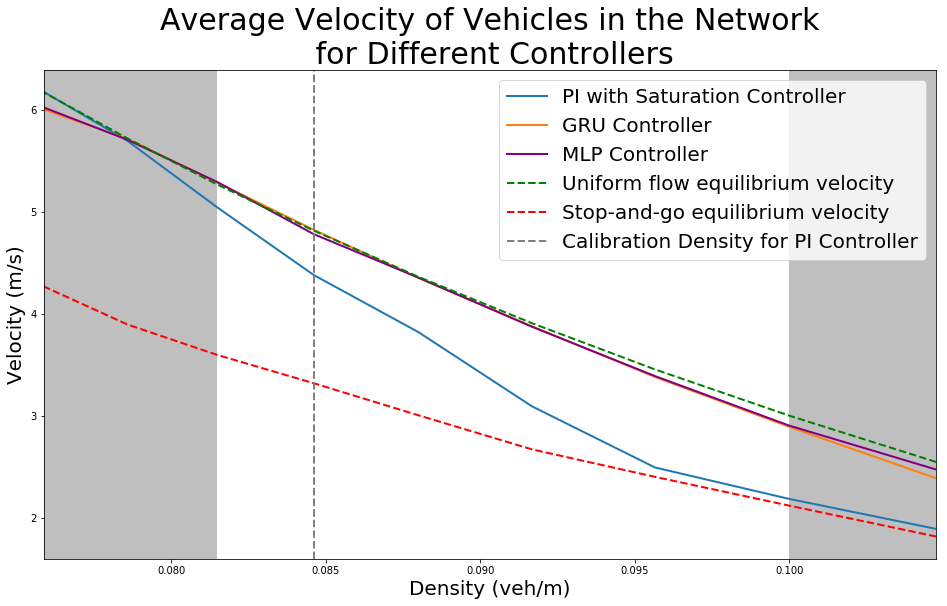Ring Shockwave Dissipation
By
Cathy Wu
Nov 2018

In this work, inspired by the Sugiyama experiment (cite) demonstrating spontaneous formation of traffic shockwaves, and experiments demonstrating the ability of AVs to suppress shockwaves (cite), we investigated the ability of reinforcement learning to train an optimal shockwave dissipating controller.
By training on rings of randomly varied size, and using a neural net with memory, we were able to learn a controller that both was optimal and generalized outside of the training distribution.
The figure shows a diagram of the experiment, in which a single AV tries to stabilize an unstable ring.


